Project management tools have evolved exponentially. Since the first tools in the 80s to avoid drawing schedules manually, to the digital workplace of today, people collaborating on projects have felt overwhelmed by tooling. Not far ago, they had to use only a few strict process oriented tools. Nowadays, they feel anxious using a variety of freemium ones.
Every day, project management is more and more important for business. Project management can help organizations stay ahead of the competition. By 2027, employers will need nearly 88 million individuals in project management-oriented roles. We project managers are high level professionals who don’t just follow the sponsor’s directions anymore. Now we are supposed to be accountable for project results, communicate proactively with top managers, anticipate problems, enhance opportunities, etc.
We need a good toolbox to be effective in a collaborative distributed environment, with stakeholders demanding information in real time. Luckily for us, project managers will not be replaced by robots. Social skills will keep essential for success on every project. When projects fail badly, after a long delay or over costing too much, causes are not to be found in tools or methodologies –tools are just a means to an end. Project management tools will not replace us. Chances are they will help us to be more effective as project managers by giving us knowledge base repositories for lessons learned and risks, interactive feedback platforms, chatbots, voice assistants, AI, big data, business intelligence, blockchain, etc.
Project management tools will not replace us. They will help us to be more effective as project managers.
With remote projects everywhere, project managers are supposed to have a high technology quotient. Now they are considered poor practitioners if they communicate through long emails, documents or presentations; if they attach documents –or even worse, videos– instead of sending links to files; if they include us into an WhatsApp group (unsolicited); if they make us feel zoom fatigue, etc.
Nowadays, there are many excellent design tools that, if used properly, can save project teams a great deal of downtime, allowing them to collaborate effectively. Project teams can work effectively, saving a lot of waste and time, if they use properly some available, excellent design, intuitive tools. Project managers who are proficient on productive tools can focus on what is important: stakeholder management, risk management, servant leadership, change management, implementing corrective actions to get the project back on track, etc.
5 Categories on Project Management Tools
Five categories are to cover the basic needs of most projects:

- TEAM COMMUNICATION: Effective project managers use email in formal communications, mainly. They’d rather use more productive tools than email when communicating about the day-to-day work. File sharing tools belong to this category –e.g. Google Drive, Dropbox, Microsoft OneDrive, Box, etc. This category includes office tools to write and share documents and polls–Google Docs, Google Slides, Google Sheets, Google Forms, Microsoft Office– instant messaging –Slack, Microsoft Teams– video conferencing –Zoom, Google Meet, Webex, GoToMeeting, Microsoft Teams– and specific tools to share screenshots and videos –LightShot, screenrec.
- TASK MANAGEMENT: This category includes tools to getting things done individually and helping teams collaborate on task lists to control who is doing what by when. Some examples are: Asana, Jira, Trello, Redmine, Wrike, Microsoft Planner, etc.
- PROJECT SCHEDULING: These are tools to produce a schedule model (Gantt chart, timeline, etc.) to track dates, durations, milestones, costs, resources, etc. Some examples are: Microsoft Project, ProjectLibre, SmartSheet, etc.
- PROJECT REPORTING: These tools allow us to display large volumes of data coming from projects to facilitate the business analysis by top managers. Examples: Microsoft Power BI, Qlik, Tableau, etc.
- PROJECT GOVERNANCE: These tools help organizational project management for individual projects, programs and portfolios. Examples: PMPeople, Microsoft Project Server, Oracle Primavera, SAP PPM, Clarity PPM, Planview, Clarizen, Sciforma, etc.
9 Freemium Tools for Project Management
Organizations in the project economy can start using good freemium tools today, no investment required up front. If free features are enough, they can continue free forever, focusing on value rather than technology. Nowadays, there is no need for ad hoc tools or digital transformation projects to improve the technology on project management. Organizations can use available tools whenever they are needed.
Nowadays, there is no need for ad hoc tools or digital transformation projects to improve the technology on project management.
State of the art has evolved so far, that now it is possible to have most projects’ technological needs covered with a free project management toolbox. This applies to big and small organizations, public or private, long or short projects, big or small teams, predictive or agile projects.
If a project manager is proficient at these kinds of tools and uses them wisely, he or she can contribute tremendously to the digital transformation and the business value delivery at the organization.
From PMPeople we recommend this list of our 9 favourite freemium tools:
1. Google Drive
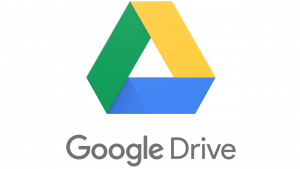
If you have a free Gmail account, then you have a 15 GB cloud drive to manage and share files at Google Drive. You can also register a Google account for a non-Gmail email account –see this screenshot to check that I have one Google account with my user jose.barato@pmpeople.org. You can have one of these if you click the button «To manage a business» when signing up in Google Drive. You will also have a free account for the other products included in the Google suite –including YouTube. You don’t need to pay for Google Workspace if you don’t need the enterprise management features.
Files stored in Google cloud are accessible from any device. They are versioned automatically. They can be shared in a secure way, controlling what people can view or update very easy and effectively.
In order to manage the 15 GB storage properly, videos should not be uploaded to Google Drive. You can always share your videos in YouTube –unlisted option makes them accessible only for those having the link.
Any file can be updated as many times as needed. We recommend sharing links to files, better than attaching them, so that receivers always access the last version. You can also make links download files automatically:
- For instance, if you follow this link, you can preview a PDF document: https://drive.google.com/file/d/1SudtecCaJBHmR1NV6sV9RUH9u32Wgft_
- If you change the link this way, you can get an automatic download to PC, Mac, tablet or smartphone: https://drive.google.com/uc?export=download&id=1SudtecCaJBHmR1NV6sV9RUH9u32Wgft_
- Use a shortener like bit.ly to make sharing easier: https://bit.ly/ejemplo_descarga_gdrive
Use the desktop version to increase productivity by syncing your desktop folder with the cloud drive automatically. This way, if another user –also using the desktop– changes a file which he has shared with me, I don’t need to do anything to get the last version.
2. Google Docs/Slides/Sheets/Forms
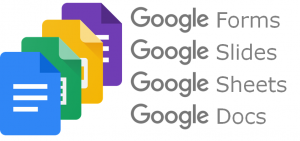
Nowadays you don’t usually work without an internet connexion. We can assume knowledge workers don’t need office offline tools anymore. If you enter Google Drive, you can create new documents, presentations and spreadsheets. Documents can be effectively updated real time among several people using computers, laptops, tablets and smartphones. No need to worry about losing changes: any update is automatically saved in the cloud.
Coworkers reviews can be managed through change tracking, comments and chats. No matter how large, these files do not consume the user’s quota of 15 GB. These documents can be downloaded as other formats: Microsoft, PDF, etc.
On the other hand, los Google Forms are very productive when you have to survey a large sample of stakeholders. Responses are recorded in a spreadsheet. In PMPeople we use this form to get support requests from users.
3. Screenrec
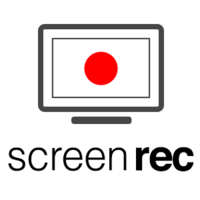
Screenrec is a light freemium application to do screenshots, with the possibility of including annotations. It can also be used for sharing screen videos, optionally including the user’s voice and camera. Images can be downloaded or shared with a link. Videos can be shared with a link.
4. Zoom

Zoom Meetings is, according to recognized experts, the highest quality video conferencing tool. As of today, it continues growing and it is the most popular video conferencing tool. It is quite remarkable how they have solved many functional and nonfunctional requirements.
It can be used for free during 40 minutes. This is not a big impediment if people don’t mind restarting the meeting.
5. Slack

Slack, the popular chat app acquired by Salesforce in December 2020, has grown exponentially since its launch in 2014. Founder Stewart Butterfield‘s mission was to replace email by changing the way teams communicate within organizations. Communications can be organized on public or private channels, and every message can be easily found (SLACK means Searchable Log for All Communications and Knowledge).
Slack’s business model is based on the need to find any shared message. The free version limits searching to the 10,000 last messages.
Our recommendation for using Slack in projects is based on 4 steps:
- Creating a workspace for the project. Each Slack workspace can be accessed independently, with a separate sign up. Use the desktop version if you need to access several workspaces at the same time. Slack users need to sign up for each workspace.
- Invite the team and the rest of stakeholders needing instant messaging communication. If you don’t want to invite them one by one, you can share a public link for them to register proactively. We discourage project instant messaging with WhatsApp since many people feel disturbed taking group invitations as personal life interference.
- Integrate applications for file sharing (e.g. Google Drive) and video conferencing (e.g. Zoom). Google Drive-Slack integration allows members to instantly create and share Google documents, or sharing files from their Google Drive accounts. We discourage uploading files from the computer to Slack. For security reasons, we recommend Google Drive as the unique document repository. Zoom-Slack integration allows members to instantly join a meeting: just by clicking a button.
- Brief the team on ground rules to communicate properly with Slack. For instance: do not correct one message with another message –authors can always edit what is wrong or delete their messages–, do not attach confidential files from the computer –use Google Drive, instead–, minimize timelines length by reacting with emojis or responding inside threads. Show how to pin certain messages, take personal notes, drafts, starring, etc. Advise them not to use Slack for formal communications, since the free version will make those messages not retrievable eventually, when the next 10,000 messages come after.
6. Asana
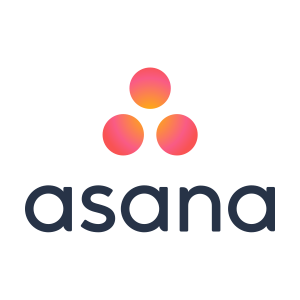
Asana was founded in 2008 by Dustin Moskovitz and Justin Rosenstein with the mission of “helping humanity thrive by enabling the world’s teams to work together effortlessly” by managing all tasks in the cloud. Technically one of the best tools ever, it can be used for free at teams up to 15 members.
We recommend Asana to manage agile projects. The following video shows how Asana and PMPeople can be used together to manage agile projects at scale, at big or small organizations (26′ in Spanish):
7. ProjectLibre

Microsoft Project is considered by many project managers as a de facto standard for schedule management in predictive projects. It has been on the market for over 40 years. ProjectLibre is normally used as an open source replacement of Microsoft Project Desktop, either because the project manager is using Mac, or the organization cannot afford to buy a Microsoft licence.
ProjectLibre constraints, compared to Microsoft Project, are no big deal if we only use the basic scheduling features. Interoperability with Microsoft Project can be achieved by exporting as an XML file.
ProjectLibre is an option for Apple users, since Microsoft does not release Mac versions for Microsoft Project desktop since 1993.
MOOS Project Viewer is a viewer for Microsoft Project files: you can open, view and print, but not edit. This product is free. You can install a desktop version for Windows, Mac and Linux.
8. Power BI
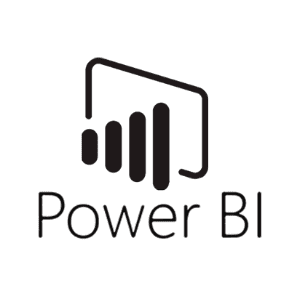
Projects can be a source of a lot of business information. In a project for installing solar panels, for instance, top managers may need to know how many panes are installed up to date, per location, area, team, etc. They are also interested in costs per day, month, etc. Business intelligence tools allow users to process data from many metrics, offering many ways for graphics and analysis. Nowadays we have many good tools for Business Intelligence. We recommend Microsoft Power BI because it can be used for free with the desktop version.
Managers need to analyze business information and also project management information. This is lots of data if we aggregate many projects, business units, programs and portfolios. See this real example on data extracted from the tool PMPeople.
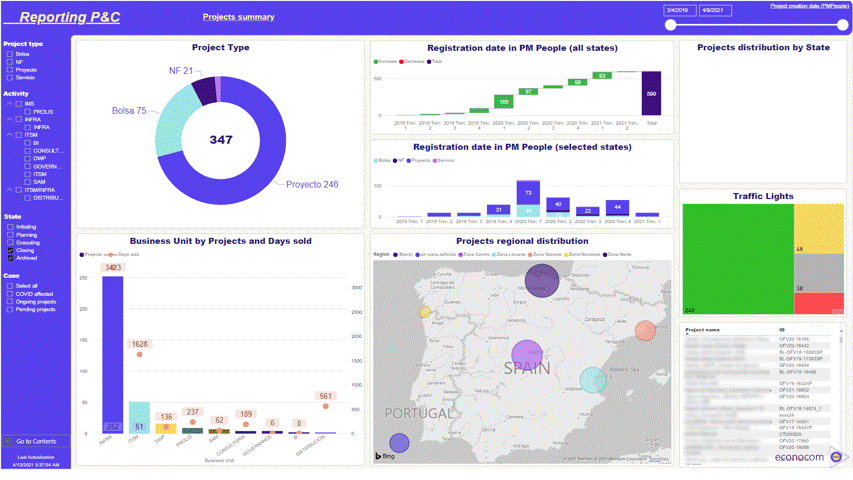
Images provided by PMO team at Econocom
9. PMPeople
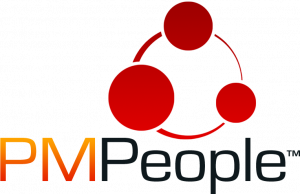
PMPeople means “people collaborating on project management”. It is a freemium project portfolio management product. Organizations in the Project Economy can start implementing their digital transformation with PMPeople. Projects are managed professionally by people collaborating using different roles. Upgrading to premium does not include all users, only those who actually manage projects. That is, many users do not count as premium seats, if they only use the following roles: stakeholder, team member, resource manager or sponsor.
PMPeople integrates with other applications for file sharing (e.g. Google Drive, OneDrive, Dropbox, etc.), instant messaging (e.g. Slack, Teams, etc.), task management (e.g. Asana, Jira, Trello, etc.), and project scheduling (e.g. Microsoft Project, ProjectLibre, Primavera, Smartsheet, etc.).
With PMPeople, people can collaborate professionally to turn ideas into reality.
PMPeople is free for unlimited time, for any number of users, projects, etc., as long as you manage your projects in the “PMPeople Organization”. If a premium organization is started, the Organization Owner should be the one to authorize monthly or annual payments –20 euro per premium seat a month, or 200 euro a year.
In PMPeople, we believe Organizational Project Management is dramatically improved when people collaborate proactively on project management. Our operation model promotes people sharing information on project management, especially those who don’t have a management position like stakeholders –comments, change requests, feedback, etc.– and team members (comments, happiness index, time sheets, expenses, etc.). For this reason, when counting premium seats, we only consider the users with management roles. That means organization members using roles stakeholder, sponsor, team member or resource manager are not considered “managers”, so they are always free. For instance, if you have an organization with 200 team members and you are the only one using roles Organization Owner, PMO, Functional Manager and Project Manager, you would pay only 20 euros a month or 200 euros a year.
A premium organization with 200 team members and 1 PM would only pay 200 euro a year!
The main premium benefits are:
- Organization members access a separate workspace. Organization Owner can manage users and roles. Managers can easily manage the organization specifics: departments, portfolios, programs, clients, sellers, calendars, reports, etc.
- Members can use the PMO role, to access and manage all projects in all business units, and all team members of all resource pools.
- Members can interact with the PMPeople support team through a live chat.
- Organization Owner can set the “reliable seal” on, so that status reports are secured and stored in blockchain.
- Ads are not displayed in premium organizations.
Any time, the Organization Owner can move data back to the “PMPeople Organization” to continue operation for free. In the reverse, data from “PMPeople Organization” can be moved to a separate premium organization.
PMPeople is the tool for the project economy. It is aimed to unify professional project management by these differential points:
- Designed by and for professional project managers, following professional project management standards.
- Online productivity –less meetings, less documents, less workflows– through distributed collaboration among 12 specialized roles: Organization Owner, 6 roles on demand management and 5 roles on supply management.
- Freemium product –unlimited time, unlimited users, only managers have to pay– usable via web and mobile application.
Start using PMPeople for free, for unlimited time and for any number of users. In premium organizations, only managers have to pay. Several roles –stakeholders, team members, sponsors and resource managers– are always free. You can increase or decrease your premium seats according to the organization actual needs. Premium organizations have access to our interactive support through Slack. Our servers are located in EU. This software can also be hosted on customer premises.
Jose Barato
Related posts
Categories
- Business (16)
- Demand Management Roles (14)
- Frequently Asked Questions (7)
- Guide (26)
- People (23)
- Assignments (2)
- Feedback (2)
- Project Team (3)
- Tracking Time And Expenses (2)
- Process (9)
- Closing (2)
- Executing And Controlling (2)
- Planning (1)
- Project Management (67)
- Management Frameworks (18)
- Organization Owner (OO) (3)
- Project Economy (54)
- Tools (19)
- Supply Management Roles (5)
- Training (6)
- Uncategorized (1)





